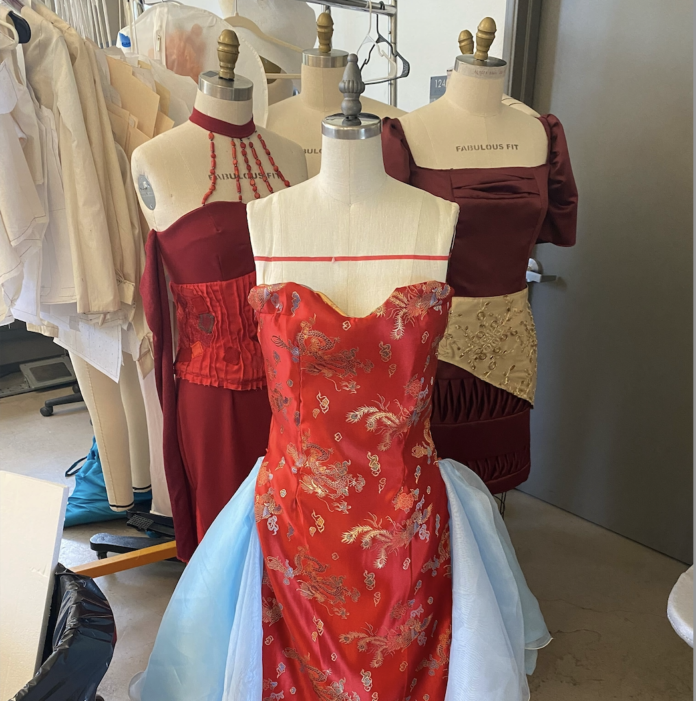Students from diverse backgrounds explain cultural appreciation and share what their cultural dress means to them
By UMAIMA EJAZ — features@theaggie.org
Everyone has their own fashion style. Some people lean toward certain trends more than others, and some don’t even consider consulting trends in the first place. Whatever the case may be for a given individual, one’s fashion choices are a manifestation of who they are, and they say a lot about how one wants people to perceive them.
Julia Dang, a third-year UC Davis student double majoring in English and design with an emphasis in fashion and the president of the Fashion and Design Society at UC Davis, said that she believes fashion is an extension of one’s true self.
“Fashion for me is really an expression,” Dang said. “A lot of people think that it’s a way to express yourself. It’s an art form. And I think it can also be a combination of all that.”

Many people’s fashion choices may have been inherited from those who raised them: parents, grandparents and other adults who were present in their childhoods. Fionna (who asked that her last name be omitted), a second-year UC Davis student double majoring in economics and viticulture and enology, said that her first memory of being enamored with fashion was at eight years old when she found a stack of Vogue magazines in her mother’s study — magazines that remain part of Fionna’s own collection to this day. Fionna said that her mother was always her main fashion inspiration.
“Even though my mom is not in fashion and wasn’t a design major, she’s always been really, really awesome in the fashion field,” Fionna said. “She has a really, really good view of how to style people. I can’t top it, but I at least want to be as good as her.”
Dang said that her cultural heritage defines her fashion in many ways today. People let their cultures speak through their fashion choices, and it is widely recognized as a beautiful thing for people of different backgrounds, beliefs and cultures to express those differences through their personal appearances. But when people wear clothing from a culture that isn’t theirs, it has the potential to be disrespectful.
“I feel there’s a very thin line between cultural appreciation versus cultural appropriation,” Dang said. “If you’re appreciating one’s culture, you’re supporting them, raising awareness and you’re not modifying and changing it for yourself. Whereas cultural appropriation is really disregarding all of the traditions behind and the history behind it.”
As a project for a fashion class, Dang recently designed a garment that was inspired by “áo dài” — a form-fitting Vietnamese tunic with long slits up both sides, typically worn over long flowing pants. She said that the dress represents culture, modesty and tradition. But just a few years ago, country singer and Grammy-winner Kacey Musgraves wore an áo dài dress without pants, attracting much criticism.
“[The clothing] was very sexualized by her,” Dang said. “However, if a person who is not Vietnamese decides to wear it, and they wear pants — like, fully traditional wear — I think that is completely cultural appreciation. And it’s appropriate for [certain] occasions.”
Taking the time to understand why others wear the things they wear, and why they wear them in a certain way, can be the difference between blindly following a trend and expressing your appreciation and respect for a long-standing tradition.
Fionna lovingly recalled a memory from the time she spent visiting Dubai when she tried wearing a hijab for the first time.
“It felt beautiful, not only because of how it looked, but also because I knew what it signifies for Muslim women,” Fionna said. “I asked the translator who was present at that moment so many questions, and did research on my own too because it was about appreciating it.”
Muslim women across the globe style their headscarves in many different ways — but that’s not the only way religion plays a role in Muslim women’s fashion choices. For Sheamain Khan, a second-year international relations major, Islam still influences her style to a significant degree even though she doesn’t wear the hijab. Khan mixes her modest style with more typical western looks, but doesn’t compromise her religious values.
“As a Muslim, I have always tried to dress modestly,” Sheamain said. “Whether I’m following western or South-Asian trends, I don’t show any of my skin at all. I have to be modest because of my religious beliefs. Even as I mix styles, I always stay within the boundaries of my religion.”
Saif Khan, a second-year computer science major, is super enthusiastic about street fashion, but, like Sheamain, he said that his Islamic faith is apparent in his clothing choices. His style is influenced by both Pakistani and American culture.
“I feel like I just use the western, like, inspiration,” Saif Khan said. “But I keep it under the limit, and I also don’t break my cultural boundaries or my religious boundaries. I feel like I just mix and match there, and somehow, it works out. […] For me personally, culture plays a huge part in my passions, so I feel like it’s the best collaboration.”
Fashion can reflect one’s identity, culture and life experience in a myriad of subtle ways. Students whose styles are influenced by their cultures urge others to think more consciously about this area of self-expression and to listen to diverse perspectives in order to appreciate, not appropriate, cultural dress.
Written by: Umaima Ejaz — features@theaggie.org




